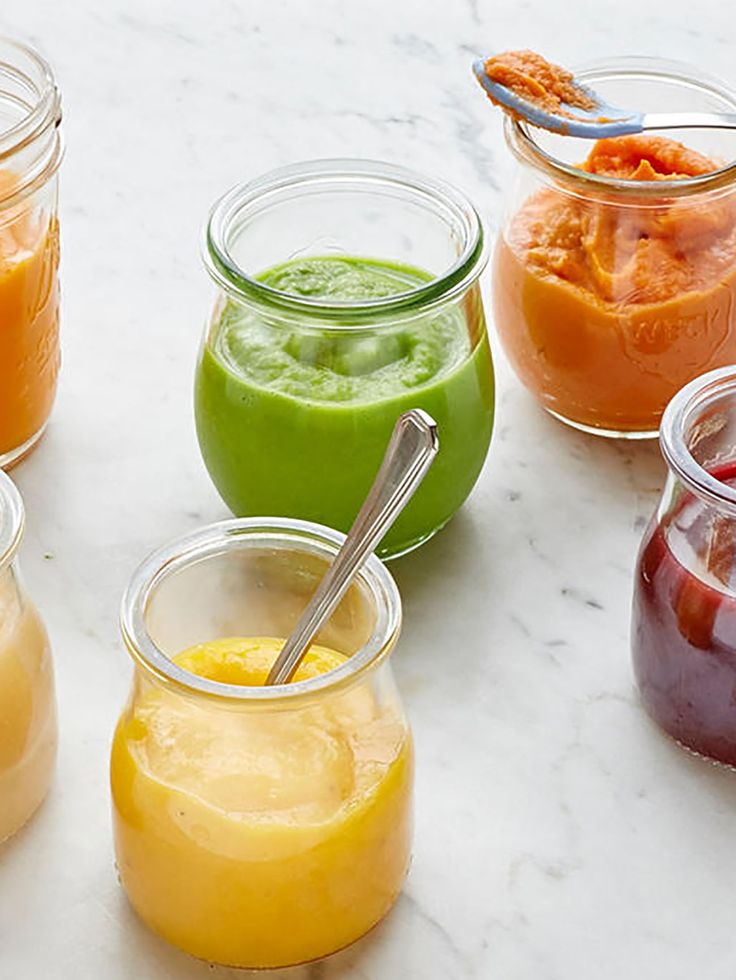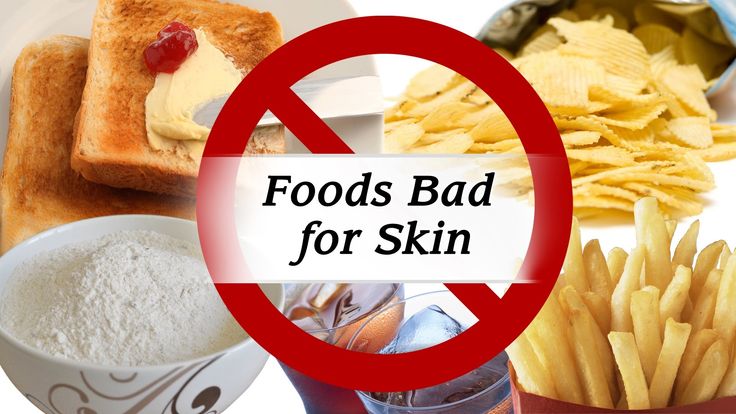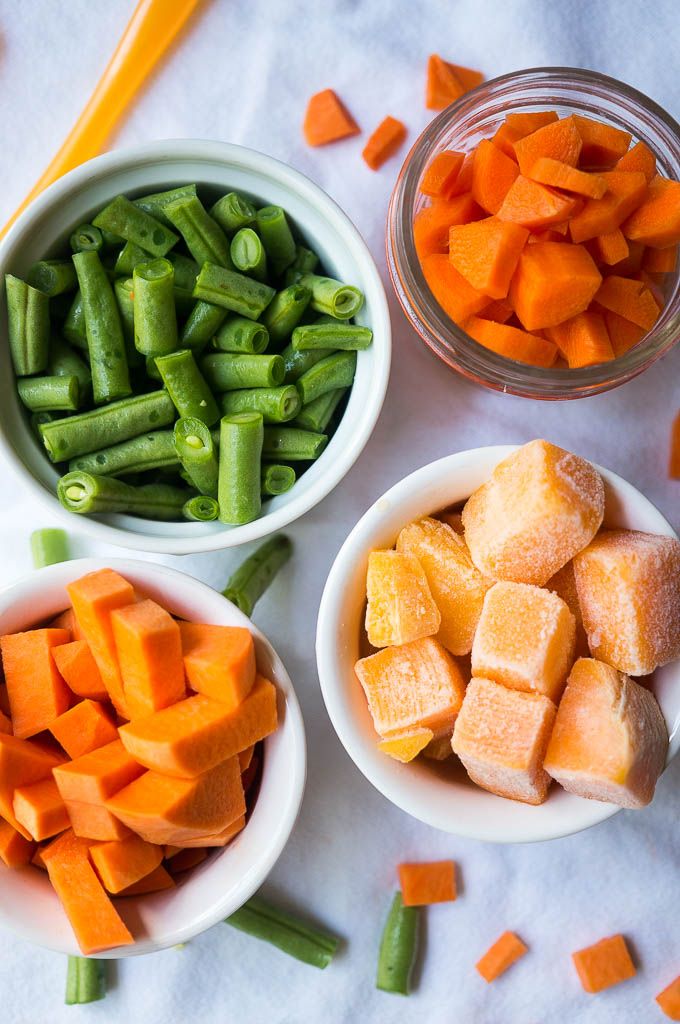When to feed baby avocado
Avocados for Babies - How to Introduce Avocado to Babies
When can babies eat avocado?
Avocado can be introduced as soon as baby is ready to start solids, which is generally around 6 months of age. Ripe avocados are soft and loaded with nutrients, making them a wonderful first food.
Baby just starting solids? Our guides have got you covered, from introducing allergens to breakfast ideas.
Background and origins of avocado
Avocado originates in Mesoamerica, where it was prepared and eaten by the Aztecs in a variety of forms, including the now-world-famous guacamole (originally called ahuaca-mulli). Colonizers brought the crop back to Europe with them, and it has since spread across the globe. While the avocado is most often thought of in relation to savory Mexican and other Central American dishes, other cultures have adapted the strange-looking fruit to different uses. These include the Indonesian drink called jus alpukat, a cold blend of avocado and coffee, and a simple dessert that marries avocado, ice, and condensed milk (or milk and sugar) found throughout Asia, from the Philippines to Vietnam.
★Tip: That beautiful bright green avocado flesh is notorious for turning brown after being exposed to the air. While not harmful, you can prevent this by adding something acidic (such as lime or lemon juice) or by wrapping the avocado in a plastic film.
Is avocado healthy for babies?
Yes. Avocado is a popular first food for babies, and it’s easy to understand why. The fruit is easy to prepare and rich in fiber and the healthy fats that babies need to support digestion and brain development.1 Avocados are also a rich source of growth-supportive B-vitamins like folate and B6, and contain vitamin E as well as zinc to fuel immune health. The healthy fats in avocado also make it a good oil option, though occasional use may be preferred because it tends to be expensive.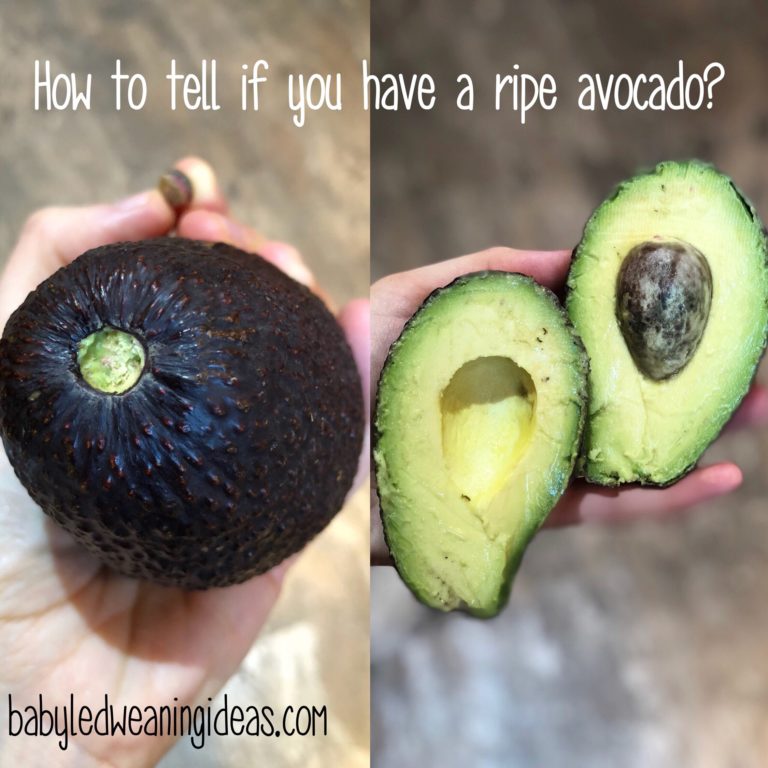
When shopping for avocados, you may notice large, smooth-skinned varieties along with the smaller, rough-skinned Hass avocados. Avocados share a similar nutrient profile, though the larger, green-skinned varieties contain slightly less fat and are therefore sometimes marketed as “lite” avocados.2 Regardless of variety, select avocados that don’t have any bruising and feel slightly soft when gently squeezed.
★Tip: Avocados start to ripen once they’re picked from their tree. If you need a rock-hard avocado to ripen quickly, place it in a brown paper bag with an apple or banana, which will release ethylene gas that speeds up the ripening process. Conversely, if you have an avocado that is already ripe that you need to keep for a little longer, popping it in the refrigerator will slow the ripening process.
Is avocado a common choking hazard for babies?
No. When ripe, avocados are not a common choking hazard, though in theory an individual can choke on any food.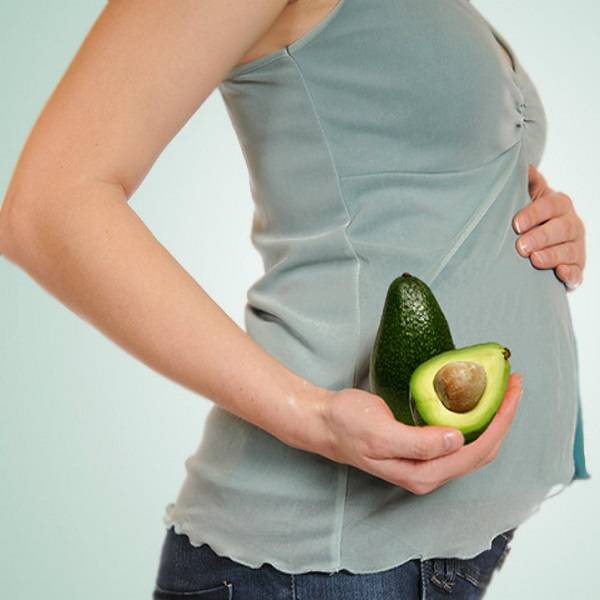 As always, make sure you create a safe eating environment and stay within an arm’s reach of baby during meals.
As always, make sure you create a safe eating environment and stay within an arm’s reach of baby during meals.
For more information on choking, visit our sections on gagging and choking and familiarize yourself with the list of common choking hazards.
Is avocado a common allergen?
No. Allergies to avocado are rare but have been reported.3 Avocado allergy is more likely to occur in individuals who are already allergic to banana, chestnut, or kiwi and those who are allergic to latex or certain pollens may be allergic to avocado or experience Oral Allergy Syndrome (also known as pollen-food allergy).4 5 Oral Allergy Syndrome typically results in short-lived itching or burning in the mouth and is unlikely to result in a dangerous reaction. Avocado is a possible trigger for food protein-induced enterocolitis, also known as FPIES. There is emerging evidence that the prevalence of avocado as a trigger for FPIES is higher than originally believed. 6 FPIES is a delayed allergy to food protein which causes the sudden onset of repetitive vomiting and diarrhea to begin a few hours after ingestion.
6 FPIES is a delayed allergy to food protein which causes the sudden onset of repetitive vomiting and diarrhea to begin a few hours after ingestion.
As you would when introducing any new food, start by offering a small quantity for the first few servings. If there is no adverse reaction, gradually increase the quantity over future meals.
How do you prepare avocado for babies with baby-led weaning?
Every baby develops on their own timeline, and the suggestions on how to cut or prepare particular foods are generalizations for a broad audience. Your child is an individual and may have needs or considerations beyond generally accepted practices. In determining the recommendations for size and shape of foods, we use the best available scientific information regarding gross, fine, and oral motor development to minimize choking risk. The preparation suggestions we offer are for informational purposes only and are not a substitute for child-specific, one-on-one advice from your pediatric medical or health professional or provider. It is impossible to fully eliminate all risk of a baby or child choking on any liquid, puree, or food. We advise you to follow all safety protocols we suggest to create a safe eating environment and to make educated choices for your child regarding their specific needs. Never disregard professional medical advice or delay in seeking it because of something you have read or seen here.
It is impossible to fully eliminate all risk of a baby or child choking on any liquid, puree, or food. We advise you to follow all safety protocols we suggest to create a safe eating environment and to make educated choices for your child regarding their specific needs. Never disregard professional medical advice or delay in seeking it because of something you have read or seen here.
6 to 9 months old: For first-time eaters, you can offer large halves of avocado, large, thick spears of ripe avocado or mash the flesh and serve on a pre-loaded spoon. If the avocado spears are shooting out of baby’s hands because they’re slippery, roll the pieces in a nutritious food that adds grip: hemp seeds, shredded coconut, or even finely ground nuts that you have already introduced (nuts are a common food allergen). See our guacamole recipe!
9 to 12 months old: At this age, the pincer grasp (where the thumb and pointer finger meet) is developing, enabling baby to pick up smaller pieces of food.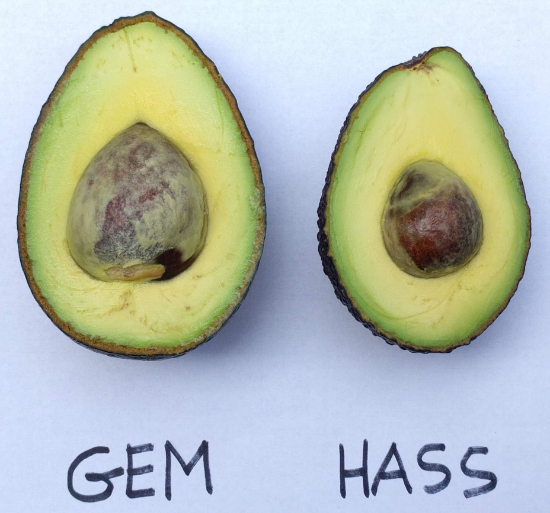 As such, this is a great time to move down in size to small, bite-size pieces of avocado. If it is a struggle to pick up small pieces of food, it’s absolutely fine to continue to offer large spears of avocado or to continue with mashed avocado.
As such, this is a great time to move down in size to small, bite-size pieces of avocado. If it is a struggle to pick up small pieces of food, it’s absolutely fine to continue to offer large spears of avocado or to continue with mashed avocado.
12 to 24 months old: At this age, toddlers are likely mastering the use of utensils. Serving half of an avocado in its skin and calling it an “avocado boat” can be a fun twist, though you can absolutely continue with small pieces of diced avocado or large spears as well. Anything goes!
Peeled avocado spearPieces of avocado rolled in hemp seedKnow what the best and worst foods are for babies starting solids with our First Foods Essentials intro kit.
Recipe: Guacamole
Serving Size: about 1 cup
Cooking Time: 5 minutes
Age: 6 months+
Ingredients
- 1 medium avocado
- 1 tablespoon (8 g) extra-virgin olive oil
- Juice of ½ lime (about 1 tablespoon / 15 g)
Directions
- In a large bowl, use a fork to mash the avocado until smooth.

- Stir in olive oil and lime juice and stir to combine.
- Serve: Scoop the guacamole into a bowl and let the child self-feed by scooping with their hands. If you’d like to work on utensils, pass a pre-loaded spoon to the child in the air for them to grab from you.
To Store: Press plastic wrap tight over the top of the guacamole so that there is no air between the guacamole and the plastic wrap. Guacamole will keep in the refrigerator for 2 days.
How often should you offer solids? See our sample feeding schedules for babies of every age.
Flavor Pairings
Avocados are a great healthy fat with a pretty neutral flavor, making them quite versatile. They pair especially well with grilled or roasted chicken, pork, and tropical fruits like mango or pineapple.
Reviewed by
E. Cerda, MSN, CNS, LDN
A. Gilbaugh, RD, CNSC
K. Rappaport, OTR/L, MS, SCFES, IBCLC
K. Grenawitzke, OTD, OTR/L, SCFES, IBCLC, CNT
Grenawitzke, OTD, OTR/L, SCFES, IBCLC, CNT
S. Bajowala, MD, FAAAAI. (allergy section)
R. Ruiz, MD Board-Certified General Pediatrician and Pediatric Gastroenterologist
- Comerford, K. B., Ayoob, K. T., Murray, R. D., & Atkinson, S. A. (2016). The role of avocados in complementary and transitional feeding. Nutrients, 8(5). DOI: 10.3390/nu8050316. Retrieved April 16, 2021
- Avocados: Nutrient-Dense and Delicious. (n.d.). @berkeleywellness. Retrieved April 3, 2021
- Telez-Diaz, G., Ellis, M. H., Morales-Russo, F., & Heiner, D. C. (1995). Prevalence of avocado allergy among atopic patients. Allergy Proceedings: The Official Journal of Regional and State Allergy Societies, 16(5), 241–243. DOI: 10.2500/108854195778702594. Retrieved April 16, 2021
- Latex Allergy | AAAAI. (n.d.). The American Academy of Allergy, Asthma & Immunology. Retrieved April 2, 2021
- Levy, D. A., Mounedji, N., Noirot, C., & Leynadier, F.
 (2000). Allergic sensitization and clinical reactions to latex, food and pollen in adult patients. Clinical and Experimental Allergy: Journal of the British Society for Allergy and Clinical Immunology, 30(2), 270–275. DOI: 10.1046/j.1365-2222.2000.00751.x. Retrieved April 16, 2021
(2000). Allergic sensitization and clinical reactions to latex, food and pollen in adult patients. Clinical and Experimental Allergy: Journal of the British Society for Allergy and Clinical Immunology, 30(2), 270–275. DOI: 10.1046/j.1365-2222.2000.00751.x. Retrieved April 16, 2021 - Blackman AC, Anvari S, Davis CM, Anagnostou A. Emerging triggers of food protein-induced enterocolitis syndrome: Lessons from a pediatric cohort of 74 children in the United States. Ann Allergy Asthma Immunol. 2019 Apr;122(4):407-411. doi: 10.1016/j.anai.2019.01.022. Retrieved April 14, 2022
Avocado for babies: When can babies eat avocado?
Updated Oct 10, 2022
Avocado is an increasingly popular choice for baby’s first food — and with good reason. Its relatively mild taste and soft texture make it a comforting and easy choice for adults and babies alike.
If you’re thinking about introducing avocado to your baby, keep reading to find out why it’s a nutrient powerhouse and the best ways to serve it.
IN THIS ARTICLE:
Can babies have avocado?
Is avocado healthy for babies?
When can babies eat avocado?
How to introduce avocado for your baby
Is avocado a common allergen?
Is avocado a choking hazard?
Avocado for babies FAQ
Can babies have avocado?
Yes! Babies can have avocado starting around 6 months of age, when they start eating solid food. Make sure the avocado you’re feeding is soft and ripe before serving. At the store, choose a fruit that gives a little to gentle pressure and has dark, bumpy skin.
Is avocado healthy for babies?
Avocados are packed with nutrition for babies. They’re a good source of healthy fats and fiber as well as full of important vitamins and minerals. Plus, they’re tasty and easy to eat!
Avocado nutrients for babies
When it comes to nutrition, avocados are probably best known for their fat content. The healthy, unsaturated fats they contain provide your baby with much-needed energy and help support brain development. Avocados also contain:
Fiber
Potassium
Folate
B vitamins
Vitamin E
Introducing fruits (such as avocados) and vegetables early on can set your baby up to enjoy them over the course of their lifetime, potentially leading to better health outcomes. Additionally, research links avocado consumption to improved lifelong cardiovascular health, weight management, and type 2 diabetes outcomes.
Additionally, research links avocado consumption to improved lifelong cardiovascular health, weight management, and type 2 diabetes outcomes.
When can babies eat avocado?
Babies and toddlers of all ages can eat avocado. It's also a versatile food that doesn't need to be cooked, which makes it very convenient.
Can babies between 6 and 9 months old eat avocado?
Yes — babies 6 - 9 months old can eat avocados. Avocados are rich in healthy fat, which provides energy as well as helps your baby absorb other nutrients. Serve avocados in a puree or cut in strips for baby-led weaning.
Can babies between 9 and 12 months old eat avocado?
Definitely! Babies can continue eating avocados between 9 and 12 months old. As your baby develops their pincer grasp, you may serve them in cubes or include them with other foods.
Can babies over 12 months old eat avocado?
Babies over 12 months old can eat avocados, too! Toddlers may continue to enjoy avocados cut up or you can add them to other foods. Try mashed up on toast, blended into a smoothie, or scooped up as guacamole.
How to introduce avocado for your baby
Avocados are typically eaten fresh and can be enjoyed on their own or added to a variety of foods. Try:
A simple avocado toast
As a topping for tacos or quesadillas
In a salsa or a smoothie
Check for ripeness and rinse the outer skin before cutting.
Serving avocado for baby-led weaning
Many babies enjoy avocados when they start baby-led weaning around 6 months of age.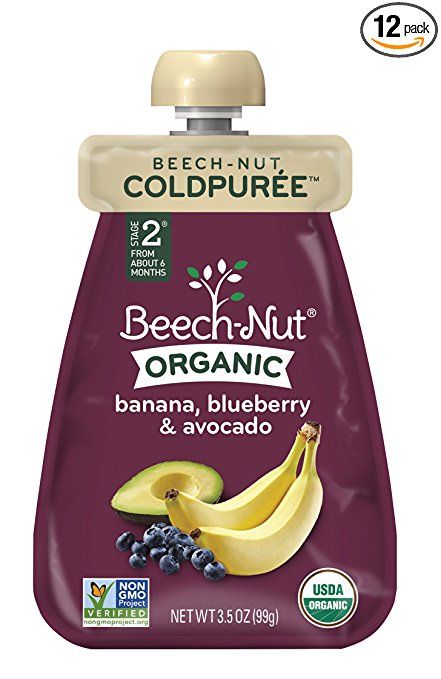 Slice pinky-sized strips so they can be easily scooped up with your baby’s palm. If they are too slippery, roll slices in panko bread crumbs or leave a small amount of the skin on the bottom to create a handle. Once your baby uses their pointer finger and thumb to pick up food, you can serve in small cubes.
Slice pinky-sized strips so they can be easily scooped up with your baby’s palm. If they are too slippery, roll slices in panko bread crumbs or leave a small amount of the skin on the bottom to create a handle. Once your baby uses their pointer finger and thumb to pick up food, you can serve in small cubes.
Avocado puree for babies
Avocados are one of the easiest foods to serve as a puree. You can blend some up to make a smooth puree or you can simply mash up with a fork to create a more textured puree. Once your baby advances from purees (around 8 to 9 months), serve avocados cut into small cubes.
Is avocado a common allergen?
Avocado is not one of the common allergens, but it’s possible to have an allergic reaction to avocados. Oral allergies — characterized by itching around the mouth — and latex allergies sometimes occur when consuming or touching avocados. If you have any allergy concerns, call your pediatrician right away.
Is avocado a choking hazard?
Avocados aren’t considered to be a high-risk choking food, especially when they’re soft and ripe. Make sure to serve in a safe size and shape for your baby’s age and feeding ability to further reduce the risk of choking. Lastly, do a quick check for any pieces of the seed before serving it to your baby.
Avocado for babies FAQ
Q: Can I give avocado as a first food?
A:
Avocados are a great option for a first food! They are soft and easy to chew; plus, they have a likable, mild flavor. Serve in a puree or cut in strips for baby-led weaning.
Q: Can babies eat avocado every day?
A:
Babies can eat avocado every day, especially since it’s a highly nutrient-dense food. If your baby loves avocados, go ahead and serve them often. However, aim to include a variety of foods in your baby’s diet as well.
If your baby loves avocados, go ahead and serve them often. However, aim to include a variety of foods in your baby’s diet as well.
Q: Which part of an avocado should be given to the baby?
A:
Babies, just like adults, should eat the green flesh of the avocado. Peel the skin and remove all parts of the pit before serving.
Q: Is avocado good for teething babies?
A:
Yes — avocados can be a good choice for teething babies because they are so soft. Many babies eat less during the teething process, but this is only temporary. Serving easy-to-chew or cold foods sometimes helps!
at what age can you give?
Child's birthday » Baby food » At what age can avocado be given to a child?
06/21/2016
Contents
- 1 What causes controversy in the scientific community
- 2 Avocados for the first complementary foods
- 3 How should an avocado look like?
- 4 How to choose a healthy avocado?
- 5 Storage conditions
- 6 Contraindications
- 7 Video: Feeding a baby from 4 months
The positive properties of avocados lie in the large number of useful substances contained in it. This is a whole complex of vitamins and minerals. Useful for digestion is the fruit fiber of a ripe avocado grated into gruel. It should be noted that its calorie content is very high - 20Kk per 100 grams of product.
This is a whole complex of vitamins and minerals. Useful for digestion is the fruit fiber of a ripe avocado grated into gruel. It should be noted that its calorie content is very high - 20Kk per 100 grams of product.
What causes controversy in the scientific community
Avocado is one of the healthiest foodsThis fruit is often prescribed for adults to lower cholesterol. For a week of systematic intake, indicators in adults decrease by 30%. The crumbs cannot have such problems with cholesterol, as well as cataracts. In addition to preventing all age-related changes, avocados prevent the development of cancer cells.
Nutritional value and chemical composition of avocadoFor children, this fruit is useful because the microelements contained in it contribute to the development of physical and mental. Scientists argue about the age at which avocados can be given to children. And this is in America, where this fruit has long been an integral part of the diet.
For Russia, avocado is an exotic product, which once again speaks against it. It has always been believed that vegetables and fruits that grow in the region where a person lives bring the greatest benefit.
Given that the avocado is also a strong aphrodisiac, the need for its introduction into the children's diet remains in question.
Avocado for the first food
The delicate texture of the first fruit food is easier for the baby's body to digest than the puree of vegetables and herbs. A more subtle unobtrusive taste also speaks in favor of fruit rather than vegetable complementary foods. But is it so important to give all the vitamins and minerals at once when you can please your child with a variety of flavors of fruits and vegetables that are less high in calories and do not contain "adult" vitamins. For example, "Omega-3" may be an extra addition to the mandatory vitamin "D" complex for babies.
Despite the variety of avocado recipes for children, it is better to consult a doctor. When introducing avocados into baby food, consult your doctor. Advice on the age at which to give avocados is mixed.
Advice on the age at which to give avocados is mixed.
Some scientists are of the opinion that this fruit should not be given to children under 1 year old. Others recommend it as the first complementary food. Here again, the exact age cannot be named, because the first complementary foods for breastfed children are recommended to be introduced no earlier than the baby is 6 months old.
The stomach of a bottle-fed baby is ready to accept tender fruit pulp from 3-4 months. As a rule, for 3-month-old children, applesauce becomes the first complementary food. Avocado has a delicate texture similar to an apple. Its taste is not bright, which can be a good addition to milk. But still, you can enter it a month after the first apple food and banana samples.
What should an avocado look like?
With the appearance of avocados, not everything is clear due to the large number of its varieties. On Russian shelves, you can most often find 4 varieties out of 400 - these are:
Avocado varieties- "Gwen" - the fruits of this variety are oblong and rather large.
 Their skin is deep green. The flesh is yellow-green. The closer to the bone, the more yellow.
Their skin is deep green. The flesh is yellow-green. The closer to the bone, the more yellow. - "Reed" also refers to large-fruited varieties. The shape of the fruit is round, the flesh is light yellow, covered with a thick pimply skin of dark green color.
- Sweetish pulp under a smooth green skin is hidden in large fruits of the Fuerte variety.
- The most common pear-shaped fruits of medium size are the fruits of the Zutano variety. The flesh of the fruit is often white, sometimes yellowish. The smooth skin is easy to peel off.
There are a lot of varieties, so it is difficult to distinguish which of the fruits is ripe and which is not by the appearance of the peel. The main thing is that the peel is green, not purple. For some varieties, the brown color of the fruit peel is acceptable.
How to choose a healthy avocado?
"Maturity" avocado When choosing an exotic fruit, you can trust your hands and ears. The first step is to touch the fruit: if it is too hard and when pressed with your fingers, its shape remains unchanged, it is not ripe. The soft fruit of the avocado belongs to the category of overripe. There is a high possibility that under a dense peel the process of decay or fermentation has already begun. It is necessary to choose the golden mean. An obligatory criterion when checking the fruit is the restoration of its original shape after pressing. There should be no dents on the peel.
The soft fruit of the avocado belongs to the category of overripe. There is a high possibility that under a dense peel the process of decay or fermentation has already begun. It is necessary to choose the golden mean. An obligatory criterion when checking the fruit is the restoration of its original shape after pressing. There should be no dents on the peel.
It's even easier to tell when an avocado is ripe by ear. When shaking it, the stone should make a sound of hitting the shell. If this does not happen, the fruit is not ripe, the grain in the stone fits snugly.
When choosing between unripe and overripe avocados, it is better to give preference to the first. After a couple of days of lying, he will reach the required condition, like a pear.
Storage conditions
Avocados are best stored at room temperature Store at room temperature. You can’t put it in a freezer or refrigerator - this fruit does not tolerate sub-zero temperatures, it deteriorates very quickly if stored improperly. Like all fruits, it must be eaten fresh, only then it will give the maximum benefit to the body and will not cause harm.
Contraindications
Possible cross-reactions are detected in the diagnosis of allergiesThe worst thing to give avocados to children suffering from latex allergies. At first glance, latex and fruit are unrelated. Upon a detailed study of the problem, it turned out that intolerance to bananas, apples, cherries, papaya, melons, tomatoes can subsequently affect cross-allergy. This will lead to severe forms of dermatitis on skin contact with latex products.
The threat of avocados is that latex proteins from the sap of euphorbia and mulberry trees are similar to those found in avocados. Latex products, which include nipples and pacifiers, with such a disease, will provoke the production of IgE. This type of immunoglobulin leads to the clinical manifestations of an allergic reaction.
In order not to condemn the child to suffering, it is necessary to consult a doctor before introducing exotic complementary foods.
If the baby has problems after trying bananas, then avocados should not be given to him.
Video: Complementary foods from 4 months
Didn't find your organization?
Add now!
2016-06-21
Previous Children's Day idea
Next Using ginger in children's diet
See also
About the benefits of chamomile tea for children
Contents1 What is it?2 Useful properties3 Instructions for use3.1 How to brew?4 Age restrictions and ...
from what age can I give and how?
Reading time: 5 minutes
Avocado is one of the most unusual fruits, it is high in calories, fat and contains many nutrients. Recently, this fruit has become available in our country, so many are wondering if avocados can be given to children. Is it really that bad for kids? When can you start using it? Is it acceptable to give babies up to a year? Let's figure it out.
Is it really that bad for kids? When can you start using it? Is it acceptable to give babies up to a year? Let's figure it out.
1 When you can give the child avocado and how many
1.1 from how many years you can give avocado
1.2 how and how much to give the baby avocado
1.2.1 Useful properties
1.2.2 possible damage
1.3 recipes of delicious dishes
1.4 How to choose the right one
1.5 Drawing conclusions
1.5.1
Avocados can be given to children under one year old only if the mother consumed these fruits during pregnancy and breastfeeding, and neither she nor the child had an allergic reaction.
But avocado is a dietary product, it is easy to digest, very nutritious and has a mild taste. And the tender pulp allows you to give this fruit even to babies, since it is easy to make puree from it. Therefore, many give it already from 7-8 months and even add it to the first complementary foods at 5-6 months.
It is allowed to add avocados to complementary foods from 6 months if the baby is breastfed, but is already familiar with many foods if he has never had allergies, good digestion.
Doctors disagree on the age at which children can eat avocados. Some believe that not earlier than 3 years old, British scientists recommend introducing the baby to this fruit only at 5-6 years old.
Dr. Komarovsky in many of his articles notes that it is better for a child to add fruits that grow in the area where the family lives in complementary foods. He does not consider avocado a very healthy fruit, so he recommends not rushing to introduce it into the diet of babies under one year old. Check out the video in which Komarovsky tells his opinion (beginning 1:24):
Avocado is bad for the environment / Sniffing / Opinion about an Irishman
Watch this video on YouTube
How and how much to give your baby an avocado
It doesn't matter when an avocado appears in your baby's complementary foods. Always start with half a teaspoon. After that, 2-3 days you need to observe the child. No new foods should be introduced during this time. Otherwise, if an allergic reaction starts, it will not be clear what it is for. Children who have not developed rashes, diarrhea, or other side effects can include avocados in their diet.
Always start with half a teaspoon. After that, 2-3 days you need to observe the child. No new foods should be introduced during this time. Otherwise, if an allergic reaction starts, it will not be clear what it is for. Children who have not developed rashes, diarrhea, or other side effects can include avocados in their diet.
The question of whether it is possible to give an avocado to a baby and at what age should be decided individually. It depends on the characteristics of digestion, the presence of allergic reactions, the nutrition of the mother during pregnancy. But do not abuse it, it is better for a child to use such fruits no more than 2-3 times a week.
Avocados are very fatty and nutritious and can cause stool disorders and flatulence.
You also need to know how much pulp you can give. If a child does not have pathologies of the digestive system, a healthy liver and intestines, from 3-4 years old he can eat a quarter of fruit a day. After 7 years, half of the fruit is allowed, and for teenagers - a whole avocado. But we must remember that it is not recommended to consume more than 250 g of pulp per day - due to the high fat content, this is a big burden on the liver.
But we must remember that it is not recommended to consume more than 250 g of pulp per day - due to the high fat content, this is a big burden on the liver.
Benefits
This fruit, also called the alligator pear, is a fruit. But in terms of taste and nutritional value, it is closer to vegetables. It contains a large amount of fatty acids. This fruit is a source of many nutrients. In 100 g of pulp, there are almost 15 g of fat, and the calorie content is 150 Kcal. There are also vitamins B, K, A, PP, E, magnesium, phosphorus, potassium, iodine, iron, silicon.
The presence of many useful substances makes avocados a valuable product that can be
to give to children. When used correctly, it has the following effect on the child's body:
- strengthens blood vessels, normalizes heart rhythm;
- improves digestion, relieves constipation, prevents weight gain;
- improves appetite;
- ensures the correct formation of the skeleton, strengthens the teeth;
- soothes, normalizes sleep;
- helps to cope with stress, prevents irritability;
- improves the functioning of the kidneys, liver;
- normalizes the composition of the blood, increases the level of hemoglobin;
- strengthens the immune system, helps to cope with infection, protects against viruses and fungi;
- improves memory, attention, increases the ability to learn.

Potential harm
But introducing avocados into the diet of children should be done with caution. After all, it can cause an allergic reaction.
It is especially dangerous to give it to babies with citrus intolerance, latex allergy. In this case, for the first time, you can give the child a taste of this fruit at 5-7 years old.
The use of avocados may cause the following side effects:
- urticaria, itching, skin rash;
- abdominal pain;
- nausea, diarrhea;
- flatulence.
When eating an avocado, be aware that its pit and peel are poisonous. It is necessary to carefully clean the fetus, remove the smallest particles of the bone.
Recipes for delicious meals
This fruit is popular for complementary foods because it is soft, has a delicate taste, is easy to digest, and does not need to be chewed. When giving avocados to babies, they first mash only from it. Then you can combine it with other products. It goes well with apples, bananas, peaches, as well as cottage cheese, kefir.
You can use it to make desserts, smoothies, soups, give it as a puree. Just keep in mind that after heat treatment, less nutrients will remain in the pulp, and it can be bitter. Before cooking, the fruit must be washed in hot water. Then peel the skin from it, cut it lengthwise and pull out the bone. If there are scales from it, clean them well. The flesh should be yellow or light green in color, dense. Loose overripe fruits should not be given to children.
When cooking, try to do everything quickly, as the avocado darkens after a few minutes. Therefore, prepare everything in advance, find out how many products you need.
The simplest meal for a baby is mashed potatoes. You need to mash a piece of pulp with a fork or beat in a blender. It is not recommended to add sugar, it will turn out sweet anyway. For babies, you can mix the fruit with breast milk.
You can purée courgettes and avocados later. To do this, boil the zucchini, grind it into a puree, add the alligator pear puree.
To do this, boil the zucchini, grind it into a puree, add the alligator pear puree.
Lettuce is made to children after 5 years. For him, you need to cut the cabbage, rub the apple and avocado, mix everything, pour over the lemon juice. Add green onions, dill and a little olive oil.
Instead of butter, a child can spread this fruit puree on bread. To do this, the crushed pulp is mixed with lemon juice.
As a dessert, avocado and kiwi puree is made for the baby. Fruits are ground, then mixed. It is better to rub the kiwi through a sieve to remove the seeds.
The soup is based on chicken broth. It is necessary to grind the pulp into a puree, mix with the broth and bring to a boil. Serve with herbs and croutons.
Avocado soup: video recipe - Doctor Komarovsky
Watch this video on YouTube
How to choose the right one
It is important to choose the right avocado in the store. The peel should be uniform in color, shiny, without spots or damage. You need to press on it with your finger - there should not be dents. If the peel is pressed through, the fruit is overripe, rotting processes could already begin in it. Such fruits should not be given to children, they can cause poisoning.
You need to press on it with your finger - there should not be dents. If the peel is pressed through, the fruit is overripe, rotting processes could already begin in it. Such fruits should not be given to children, they can cause poisoning.
It is better to choose a slightly unripe fruit, it will ripen in 3-5 days at room temperature. But in order not to take a completely green one, which will be tasteless, you need to shake it near your ear. You should hear the tapping of the bone.
Drawing conclusions
Whether it is possible to give a child or not, and also when it depends on many factors and on the parents themselves. Opinions differ, it is recommended to follow a simple rule that you can give avocados to your child:
Read on the topic Olive and olives to children: is it possible to give, from what age
One way or another, it is better to consult a doctor, as it depends on the health of the baby.

